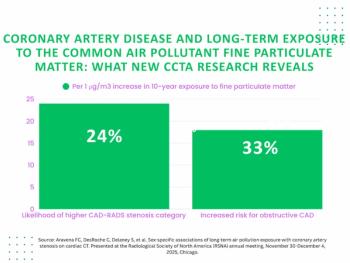
Pediatric Nuclear Medicine Guidelines and Radiation Doses
Hospitals that provide pediatric nuclear medicine services reduce dose when sticking to guidelines.
Most hospitals in the U.S. have reduced pediatric radiation doses following the implementation of the Image Gently campaign and new North American guidelines, according to an article in
Researchers from Harvard Medical School and Brigham and Women’s Hospital in Boston, MA, and Massachusetts Institute of Technology in Cambridge sought to describe the practice of pediatric nuclear medicine at general hospitals in the United States and to assess the impact of dose awareness campaigns such as Image Gently.
The researchers sent out a web-based survey to 196 general hospitals that had more than 300 beds, requesting information regarding hospital type, whether the hospital practices pediatric nuclear medicine, and the hospital’s method for determining the administered activity for children. Hospitals dedicated to pediatric, veterans, psychiatric, and rehabilitation care were not included in the survey.
Data were collected for five procedures performed on children:
•99mTc-methylene diphosphate (MDP) bone scans
•99mTc-mercaptoacetyltriglycine (MAG3) renograms
•99mTc-dimercaptosuccinic acid (DMSA) renal cortical scans
•99mTc-based hepatobiliary scans
•18F-FDG PET scans
The sites reported dosage by weight (MBq/kg), minimum and maximum dosages, and the activities that they would administer to two hypothetical patients: a five-year-old boy (20 kg, 110 cm tall) and a 10-year-old girl (30 kg, 140 cm tall).
A total of 121 (61.7%) hospitals responded, 82 (67.8%), of which performed nuclear medicine on children. The results showed that most sites were familiar with and followed recommended guidelines:
• All sites scaled administered activity for children, mostly by body weight
• 82.4% of sites were familiar with Image Gently
• 57.1% were familiar with the 2010 North American consensus guidelines for children
• 54.9% altered their protocols because of the guidelines
“The median value for parameters defined by the guidelines was equal to the guideline-recommended value for all procedures,” the researchers wrote. “More than 50 percent of the sites-particularly those familiar with the guidelines-were compliant with the guidelines regarding both the acquisition parameters and the administered activities for the two hypothetical patients. However, there remained a wide variation in practice, sometimes by more than a factor of 10, for sites not familiar with the guidelines.”
They concluded that although more promotion and dissemination of both Image Gently and the North American guidelines are needed, they still have a significant impact on the practice of pediatric nuclear medicine practice.
Newsletter
Stay at the forefront of radiology with the Diagnostic Imaging newsletter, delivering the latest news, clinical insights, and imaging advancements for today’s radiologists.




























